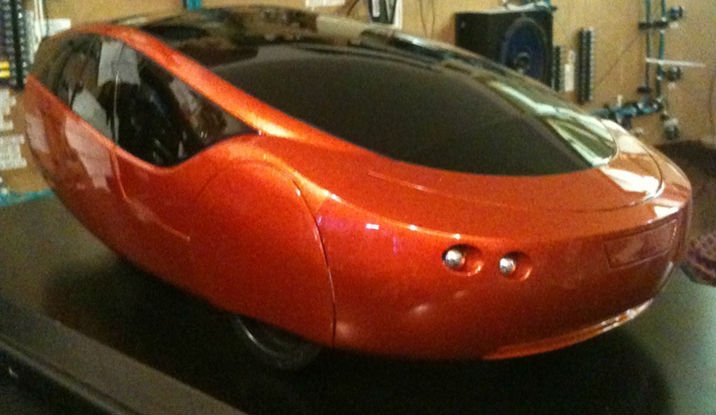Israel has been coined the “Startup Nation”; the country with the highest concentration of startups in the world. Over the past 63 years, thousands of Israeli startups have given rise to innovations in fields as diverse as irrigation; GPS navigation; and cherry tomatoes.
But which are the Israeli startups that are truly changing the world?
We’ve picked 10 startups that we believe have impacted the world for the better or are in the process of changing lives forever.
Stratasys
One technology that is gradually being integrated into an increasing number of fields is 3D printing, and no company has more 3D printing technology in its arsenal than Israeli-American giant Stratasys. Bringing printing to a new level, Stratasys is bridging today’s most innovative ideas with reality. The company’s printers (and scanners) can be used in various fields, ranging from 3D-printed cars to clothes and medical devices. Already, Japanese fashion designer Yuima Nakazoto used Stratasys’ 3D printer for his latest collection, printing futuristic sportswear. Perhaps more importantly, 3D printing can be used in medicine for its geometric capabilities linked with patient care and advanced experimental work. In all fields, Stratasys seems to be adding another dimension of possibilities.
Predicting the future
A graduate of the Technion, 27-year -old Dr. Kira Radinsky has developed software that can predict pandemics and genocides several months in advance. By scanning 500-years-worth of literature, including all the materials published in the New York Times from 1880 onwards, she was able to find strong correlations between various historical events. Among her other findings, Radinsky also discovered that the combination of droughts and storms is a good indicator to a potential Cholera outbreak. Already, her software predicted the Cholera pandemic in Cuba last year, several months before it actually happened. Radinsky started university at 15, earned her PhD at 26 and founded two startups on the side. She even landed a spot in this year’s MIT list of Top 35 Innovators Under 35, alongside the likes of Google’s Larry Page and Sergey Brin and Facebook’s Mark Zuckerberg.
“Disk-On-Key” (USB flash drive)
Yes, that USB memory stick you just saved your assignment on hails from the Holy Land. This world-famous portable storage device was first made by M-System’s, the company of now legendary Israeli entrepreneur Dov Moran as an upgraded version of disk and diskette technology. Moran went on to sell it to SanDisk for a cool $1.6 billion. This miniature life-saver, rescuing us from panic on many occasions, uses flash memory and USB interface for connection to personal computers. Not only can it fit our pockets, but the USB flash drive can store up to 11,830 times more data than the floppy disk (remember that?). This invention made our computer files infinitely more portable and secure. Yay for USB!
ReWalk
The ReWalk aims to give those with lower limb disabilities, such as paraplegia, an experience that resembles walking. ReWalk consists of an exoskeleton suit, developed by a granduate of the Technion, Israel’s Institute of Tcehnology, which uses patented technology with motorized legs to power knee and hip movement. Battery-powered to allow all-day use, ReWalk is controlled by on-board computers and motion sensors, restoring self-initiated walking and stepping without the need of tethers or switches. ReWalk controls movement using subtle changes in center of gravity, mimics natural gait and provides functional walking speed. The system senses a forward tilt of the upper body, which triggers the first step. Repeated body shifting generates a sequence of steps, which allows natural and efficient walking. The ReWalk also sits, stands, turns and can even climb and descend stairs. ReWalk does more than make people walk – it gives hope. “It is an amazing feeling to be walking again,” said Dan Webb, a client from the US, who is paralyzed. “Doing the Rewalk, it’s cutting edge, it’s very exciting for me that I’m part of something that might be the future.” Dan was paralyzed after a spinal cord injury and is now on his feet again.
[youtuber youtube=’http://www.youtube.com/watch?v=2Xd27c-pz4Y’]
Storing electricity in the air
Phinergy has created an aluminum-air battery designed for electric vehicles, which allows a significant increase in travel range (three times that of a regular electric vehicle). With this more eco-friendly and efficient battery, Phinergy‘s technology could allow for a dramatic reduction in global oil consumption and greenhouse gas emissions. The system is based on metal air technology, including aluminum air and zinc air. A metal-air battery contains an air-electrode that breathes oxygen from the surrounding air, instead of the conventional cathode. This means that the battery consumes only the required oxygen from the air, rather than having heavy materials that bound oxygen inside it. Metal-air batteries therefore have a huge potential for delivering high capacity with low weight. Some other advantages of the technology are zero CO2 emissions, full recyclability, safety and low cost. The company has currently developed metal-air batteries that are customizable and can provide energy solutions for a wide range of applications, such as cars, boats, portable electronic devices and smart grid storage. Imagine a world with zero CO2 emissions and multiplied efficiency.
Sign up for our free weekly newsletter
Subscribe[youtuber youtube=’http://www.youtube.com/watch?v=6-zcxI0XdK8′]
Drought-resistant “superplant”
Israeli researchers at the Technion in Haifa have engineered drought-resistant plants that could be game-changers in the current global food crisis. Currently, 40 countries worldwide are suffering from food shortage and 870 million people, or one in eight, are chronically undernourished. Many of these countries’ food shortages are linked with drought. It appears as though the time is right for a change of strategy. The engineered plants require less water, yield bigger harvests and stay fresh for longer. They can go on for a month without water and only need 30 percent of the amount of liquid that normal plants do, so are therefore able to survive droughts. Could this be a big step in the direction of a hungry-free world?
Car-to-car communication
Do talking cars seem like a thing of the future? Well, the era where cars communicate with each other in order to enhance driving safety is nigh. Autotalks, founded by Nir Sasson and Onn Haran, has developed a smart chipset that enables cars and traffic infrastructure to literally “speak” via electronic messages. This technology should be able to predict the chances of road accidents and traffic jams, with vehicle-to-vehicle alerts being sent in real time to notify incoming drivers to slow down or to stop the driver entering the junction. The system is set to be in use by 2015.
The everlasting solar battery
 A battery with infinite power…yup, we’ve got it. Haifa-based company Sol Chip has developed the world’s first solar battery that is able to recharge itself to power wireless sensors and mobile electronics devices. Through a cross pollination of solar-cell and microchip technologies, the company now offers the missing technology that will improve batteries’ life or in many cases completely eliminate the need to recharge or replace the power source. Although currently limited to an output of 8.4 volts of power, the solar battery can provide power to a vast array of outdoor devices. Right now, the company is working on integrating their technology into the fields of agriculture, farming, weather testing and security-related applications.
A battery with infinite power…yup, we’ve got it. Haifa-based company Sol Chip has developed the world’s first solar battery that is able to recharge itself to power wireless sensors and mobile electronics devices. Through a cross pollination of solar-cell and microchip technologies, the company now offers the missing technology that will improve batteries’ life or in many cases completely eliminate the need to recharge or replace the power source. Although currently limited to an output of 8.4 volts of power, the solar battery can provide power to a vast array of outdoor devices. Right now, the company is working on integrating their technology into the fields of agriculture, farming, weather testing and security-related applications.
Robot Snake
Rescuing victims of natural disasters is a lot easier than before with the Robot Snake. This robot is designed to enter spaces in collapsed buildings and assist in location and rescue operations. Developed in association with the Technion, the machine is unique in its manner of crawling and is very flexible thanks to its large number of segments. Each joint is equipped with a motor, a computer, sensors, wireless communications and batteries. The head carries a camera. Thanks to its flexible structure, the robot can crawl through wreckage without further damaging the collapsed structure and provide vital information about inaccessible areas, including the status of people who might be trapped or the location of hazardous materials.
Hacking the human brain
ElMindA has developed Brain Network Activation technology (BNA) in association with Bar Ilan University. Basically, this technology is a major step towards “hacking” the human brain, and gaining control over specific brain functionalities, such as rehabilitation from injuries, reactions to treatment, psychiatric and neurological problems and pain. The company has made significant progress in drug research, utilizing the BNA technology in detecting and quantifying drug-induced neural response and changes in brain network activity. They’ve also used the technology to reveal differences between the effects of a drug and a placebo. All in all, ElMindA has opened our eyes to a never-before-seen dimension of our brains.
Photo: Business technologies today by Bigstock
Related posts

Editors’ & Readers’ Choice: 10 Favorite NoCamels Articles

Forward Facing: What Does The Future Hold For Israeli High-Tech?

Impact Innovation: Israeli Startups That Could Shape Our Future





Facebook comments